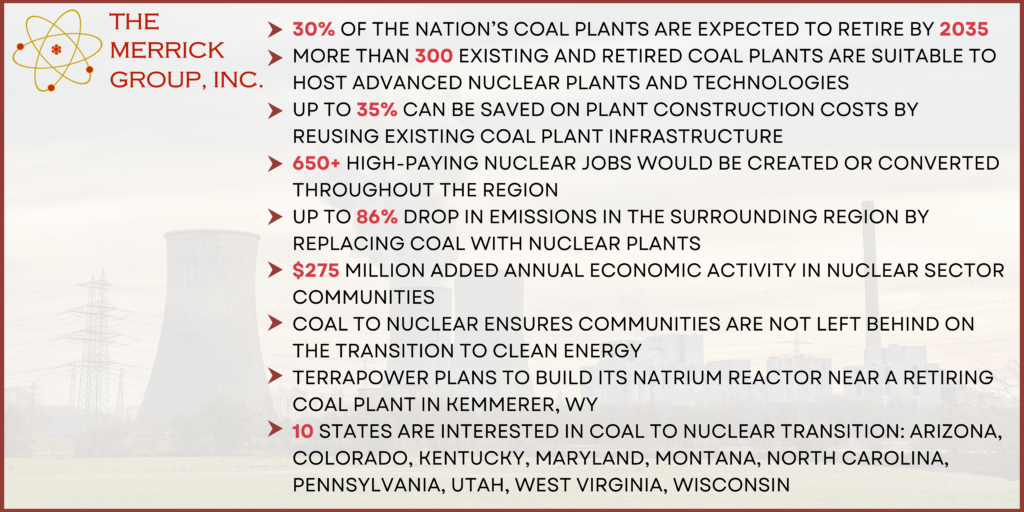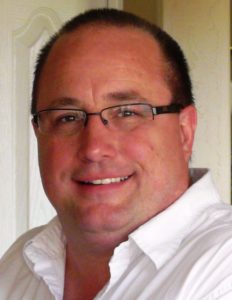The energy landscape is undergoing a significant shift. With a growing focus on clean energy solutions, coal plants – a mainstay of American power generation for decades – are being phased out. This presents a unique opportunity: converting these retiring facilities into next-generation nuclear power plants. Here are 9 key things to know about coal stations to nuclear power plants:
1. Energy Density of Nuclear Fuel
Nuclear power boasts incredible energy density. A single uranium pellet packs the same punch as 17,000 cubic feet of natural gas, 149 gallons of oil, or a whole ton of coal! This translates to a smaller footprint, reduced transportation needs, and a more stable energy source.
2. Most of Coal Plants Could Be Converted
With 30% of the nation’s coal plants slated for retirement by 2035, a significant number of suitable sites exist. A 2022 Department of Energy report found that over 300 existing and retired coal plants could be repurposed to house advanced nuclear reactors. This leverages existing infrastructure like electrical grids, transmission lines, and support buildings, significantly reducing construction costs. Studies suggest savings of up to 35% can be achieved by reusing these existing assets.
3. Converting Could Preserve Jobs and Create New Jobs
The transition to nuclear isn’t just about clean energy – it’s about creating jobs. Shifting a coal plant to nuclear power can create or convert over 650 high-paying jobs in surrounding regions. This injects vitality into local economies and provides skilled employment opportunities.
4. Coal to Nuclear Transitions Bring Dramatic Environmental Benefits
One of the most compelling arguments for coal-to-nuclear conversion is the drastic reduction in emissions. Replacing coal with nuclear power plants can lead to an astonishing 86% drop in emissions in surrounding areas. This significantly improves air quality and combats climate change.
5. Nuclear Economy Growth
Clean energy isn’t just good for the environment; it’s good for business. Communities embracing the switch to nuclear power can expect a boost of up to $275 million annually in economic activity within the nuclear sector. This fosters innovation, creates new businesses, and contributes to a more sustainable future.
6. Leaving No Community Behind
Transitioning away from fossil fuels can leave some communities behind. Coal-to-nuclear conversion ensures a smooth shift towards clean energy while preserving vital jobs and infrastructure. This empowers communities to participate in the clean energy revolution without being left in the dust.
7. A Real-World Example: TerraPower’s Natrium Reactor
The concept of coal-to-nuclear isn’t theoretical. TerraPower, a leading nuclear energy company, is already planning to build its innovative Natrium reactor on the site of a retiring coal plant in Kemmerer, Wyoming. This pioneering project serves as a powerful example of the transition’s feasibility.
8. Widespread Interest Across the United States
The coal-to-nuclear transition isn’t just a local phenomenon. There’s a growing national movement with ten states actively exploring this option. These states include Arizona, Colorado, Kentucky, Maryland, Montana, North Carolina, Pennsylvania, Utah, West Virginia, and Wisconsin. This widespread interest highlights the potential for a nationwide shift towards clean nuclear power.
9. A Brighter Energy Future
The transition from coal to nuclear power plants presents a win-win situation. It creates jobs, revitalizes communities, and significantly reduces emissions. By embracing this innovative approach, we can secure a clean, reliable, and prosperous energy future for generations to come.
The Merrick Group, with more than decades of experience in the power plant industry, is committed to helping communities navigate the complexities of the energy transition. Contact us today to learn more about how we can help you with our range of services.



